Bees Have Nothing To Do With This
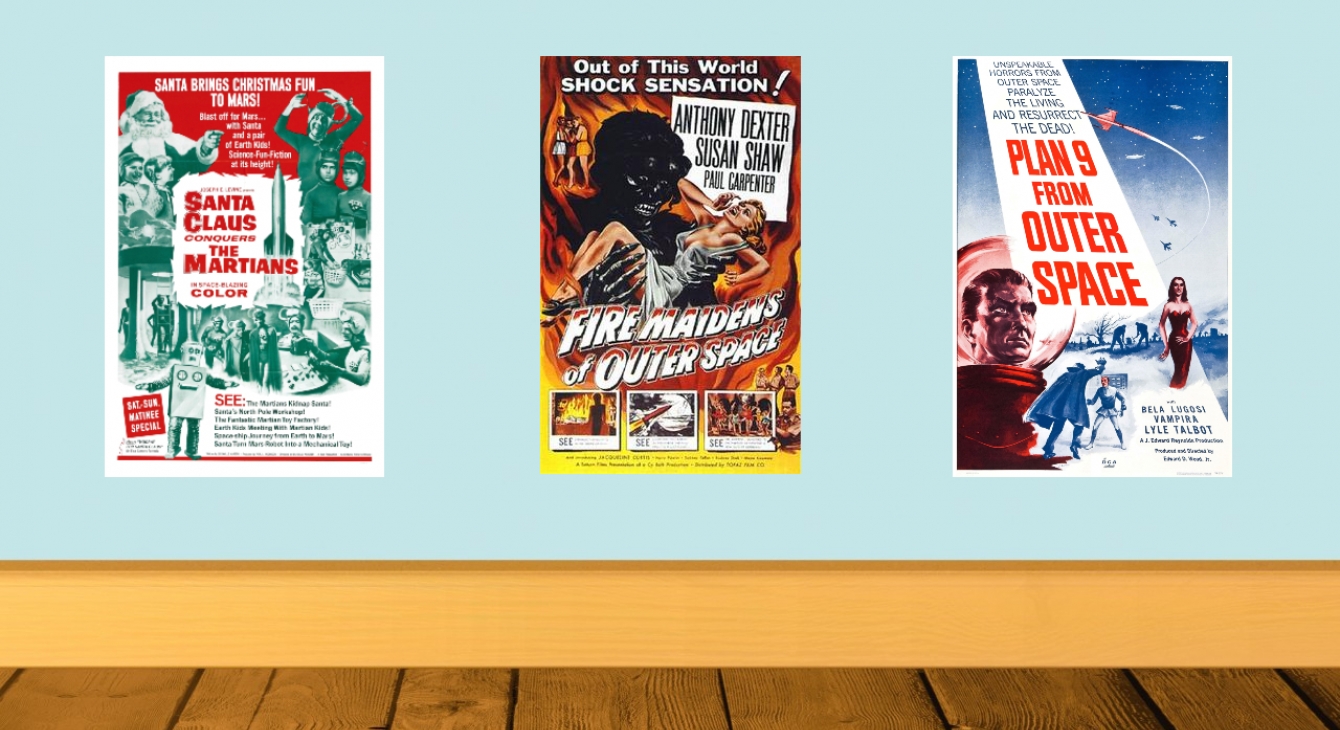
Cheap, bad but not without a sparkle — that’s how you can describe the movies we are going to tell you about today. Not all the films could be like “Parasites” or be internationally recognized. The only prize some of them can win would sound like “So bad that it kind of good”. What is the history behind these movies and what place do they take in the world of cinematography?
A long time ago in a Hollywood golden era far, far away it was not that usual like it is now to show only one film at a time. Originally, at the time of silent films, there were life performances, cartoons, mini documentaries or even newsreels shown before the main movie started. From the end of 1920es when a shift to tone movies began cinemas started to refrain from this kind of bonuses. Their place took a double feature trend — there was a cheaper movie shown before the “star” one — the real reason of audience attraction.
The production of such movies was even more profitable then creating high quality short films — film studios signed long-term contracts with actors and could force them to star both in big projects and in some garbage movies as well. These kind of “products” with the low contents of cinematography were obligatory +1 for every good movie matenee, cinemas couldn’t even refuse to buy them because it was impossible to get the main hits otherwise. By the way a category B movie was very often a blind buy — why to pick over if the quality leaves much to be desired anyway.
But no doubt there were their own plus points in such kind of movies. In first place they promoted new genres like westerns, horrors and sci-fi. These genres had their own fans and they were growing in numbers with each new double bill. What is more, many actors became famous through these genres.
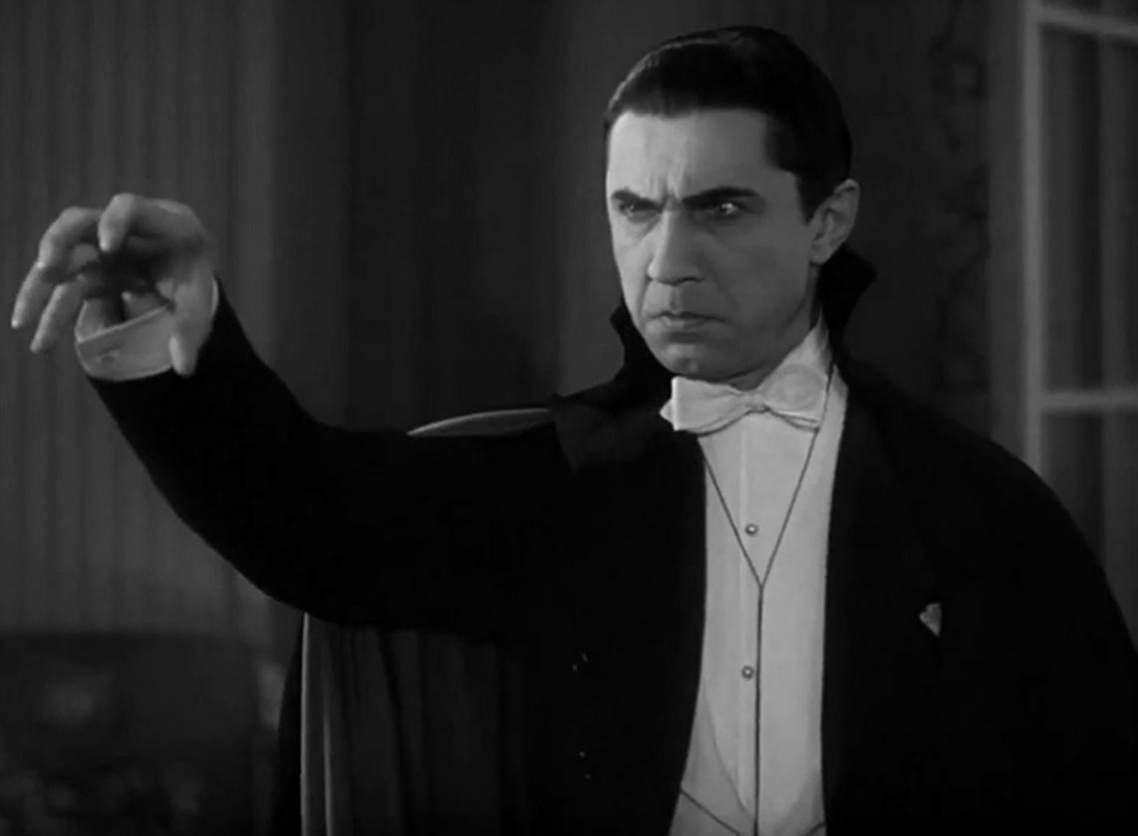
Undoubtedly the main advantage of category B movies was and still is the greater freedom of action. While the big projects have to stick to traditional “frames” and use proven artistic ways, low-budget movies are experimenting with special effects, plot devices and editing. Directors of B movies don’t hesitate to add elements of erotic to their films and investigate the boundaries of the ethics. Of course this kind of attitude outraged the conservative audience, however this indignation wasn’t something new — released in 1896 B movie “Kiss” has already shocked religious viewers with its plot. That resulted in adoption of the Hays Code — basically a set of rules regulating film’s self-censorship in 1930. It prohibited to show on screen interracial relationship, every hint of sexuality, childbirth, mock up clerics (but it was okay to offense atheists) — and the list goes on. Well, it was not impossible to shoot movies, which hadn’t met the Code, but they would definitely not receive a wide release. The Hays Code was replaced by the MPAA film rating system in 1967.
Cinemas have been working in that “get two if you want one” mode up to the year 1948 until one of the film distributors sued Paramount Pictures studio. The case got a title “US vs Paramount Pictures”. Eventually, the court found illegal to force cinemas buying the second-rate movies. Film production companies had to drastically reduce the amount of movies and increase the budgets of their projects while the production of low-budget films became the priority of independent studios, which got an opportunity to work with serious exhibitors. This time is considered to be the beginning of the down of Hollywood’s golden era.
But B movies on the opposite had everything ahead of them. The Hays Code was no longer a hindrance because independent studios were not afraid of failing of their releases — the very possibility of collaboration with big exhibitors, even if not to the wide audience, was a great portion of luck. Around the same time Americans began to buy TVs in large numbers and B movies discovered a new stage to perform on — television.
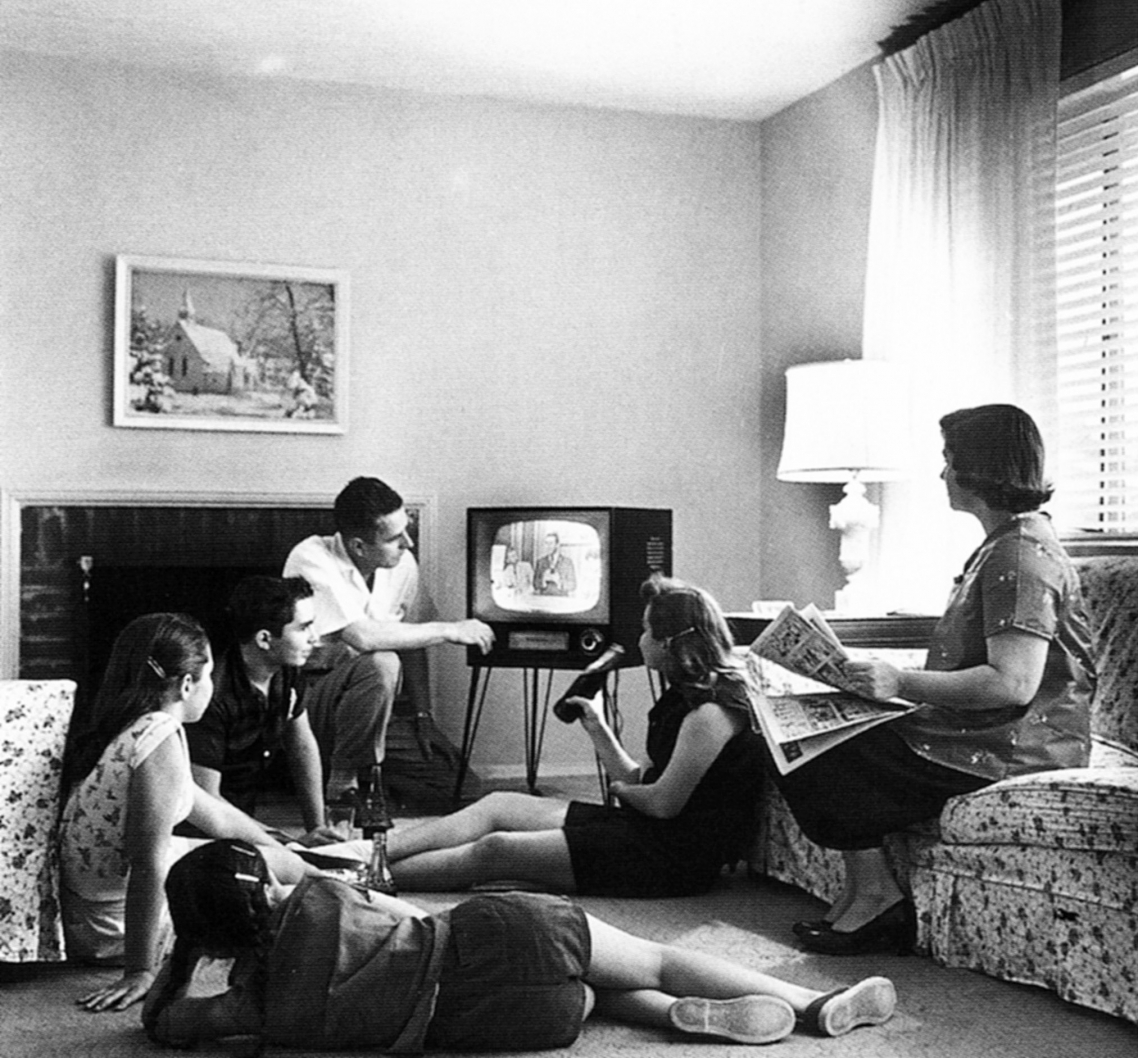
However the pattern of double bills did not immediately disappear completely — it turned to be particularly beneficial for drive-in cinemas (a type of open-air cinema, where you can watch a movie while sitting in your car. The sound is broadcasting on a certain radio frequency). Afterwards the practice of selling two movies for one price switched to video cassettes and CDs and now is experiencing its rebirth as night non-stops and movie nights. You will agree with me that there’s always a “star” film that cinemas show the last at this kind of events and one movie or two that are basically add-ons. I’ve watched “The Martian” like that and left the cinema hall (together with the half of the audience) as soon as I realized that I have no interest in the last movie they were going to show that night. I won’t name the title as a courtesy.
Despite the trends were still set mostly by major studios, the small ones were pretty skillful in “riding the wave” and predicting, which genre becomes more popular.
Westerns got on top of the list in 1930es — they reached two thirds of all the movies produced in Hollywood at that time. They hold this position right up to the 70es. However the genre experienced its crisis already in 60es — there were no new plots in sight and every topic seemed to be jaded. The help came from an unexpected source — from Europe and Japan (Does the name of Akira Kurosawa ring a bell?). A special contribution was made by Italy — do you remember in “Once Upon a Time in Hollywood” the main character played by Di Caprio first refuses with scorn to star in “spaghetti westerns” and then accepts the offer out of despair? Well, Italy had a reputation of second-rate movie producer in this genre despite its great start, to say the legendary — “Dollar Trilogy” directed by Sergio Leone with Clint Eastwood in the title role. But maybe exactly this trilogy turned all the spaghetti westerns into second-rate movies — because it’s very unlikely someone could beat that movie, including Leone himself.
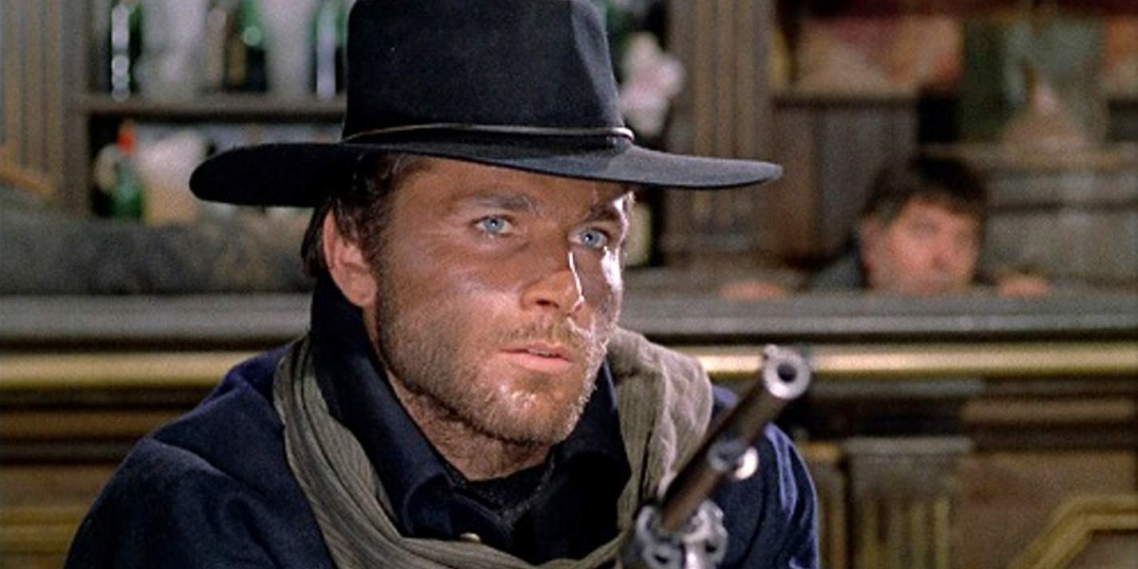
Anyway western movies left a remarkable trace in the history of the cinema (for instance Han Solo from “Star Wars” is a typical protagonist from wild west and the original trilogy itself turns into a common western movie if we put aside sci-fi, outer space and the forth). Even those of them, which were a real failure — the fact that was proofed by Quentin Tarantino and his “Django Unchained” from 2012. The movie was a kind of homage to spaghetti westerns in general and especially to “Django” from 1966 in particular. A failed remake of Akira Kurosawa’s “Bodyguard” with starring Franco Nero, so called low-budget Clint Eastwood.
Westerns were replaced by noir movies in the end of 40es — beginning of 50es. It was dark cynical films with an asocial main character and oppressive atmosphere, which was emphasized with the help of a shadow play. Few of its obligatory features were: a femme fatale, who tries to seduce the protagonist, who is too old for her, constant rain or fog, hats, coats and of course a pocket pistol (like Browning for example) that femme fatale pointed at the main character.
It’s interesting that despite the fact many film noirs were made to be add-ons to some high budget movies, they are exactly the ones that considered to be the main heritage of Hollywood golden era. “Desperate” directed by Anthony Mann in 1947 got strong reviews by critics and even succeeded in theatres.
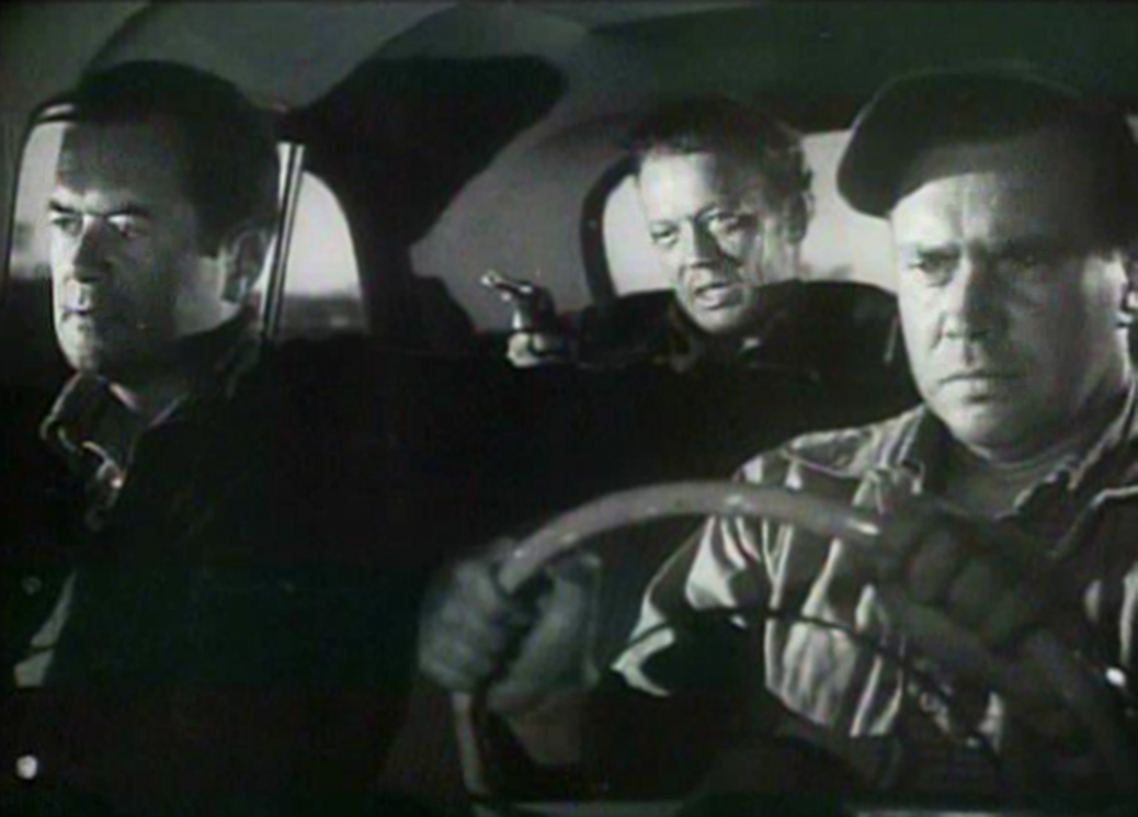
What is more, one of the first female directors — Ida Lupino worked in the genre of low-budget noir movies. Her first and best work is “The Hitch-Hiker” from 1953 with the screenplay written by Daniel Mainwarning, who was on the Hollywood’s black list at that time because of his procommunist opinion and that’s why was not mentioned in credits.
Anyway, noir was a short flash in history of B movies, a bright one though. It were horror and sci-fi movies, which shone like suns on the sky of cinema history in 50es and 60es. Exactly at that time “the worst director of all times” — Ed Wood shot his best failures. Oh, Ed Wood! How many beautiful monsters of cinema world created that remarkable man! The most significant of them are “Bride of the Monster” and “Plan 9 from Outer Space”, the only his work that had the box-office success and also one of the latest movies with a gothic icon called Vampira played by magnificent Maila Nurmi.
Wood loved to get around 20-30 scenes a day in one shot. The main feature of his movies was their incredible cheapness. Seriously, one day Ed Wood stole a rubber octopus from a warehouse of one film studio for his “Bride of the Monster”. But he accidentally ripped off one of octopuses’ tentacles and forgot to steal the mechanism that put the creature in motion while he was committing his fascinating crime. So Bela Lugosi should have to pretend he is strangled by the octopus.
The history of production of each Ed Wood’s movie is so epic that there is a book about him published in 1992 and two years later Tim Burton made a movie based on it with Johnny Depp as Ed Wood.
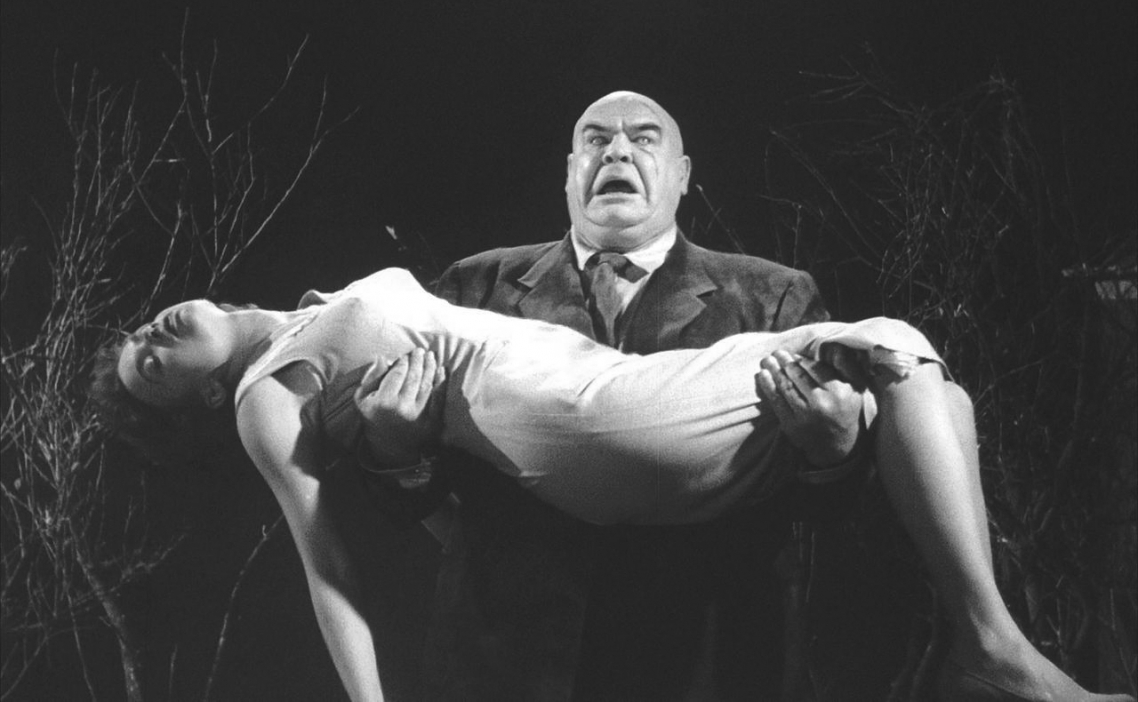
Well, Hollywood doesn’t live by Ed Wood alone. Let us not forget the movie called “Invasion of the Body Snatchers” from 1956, which had a great success and gave rise to many disputes — was the movie an allusion to communist threat for US or otherwise an anti McCarthyism propaganda. Movie director Don Siegel insisted that he just made a film about an alien invasion.
Remake of Japanese “Godzilla” made in 1954 resulted in the entire series of movies about irradiated sea monsters like “Creature from the Black Lagoon” (1954) and “It Came from beneath the Sea” (1955). This extravaganza was ended with a dilogy of “The Amazing Colossal Man” (1957) and its sequel “War of the Colossal Beast” (1958). The main character became, together with Dr. Jekyll and Mr. Hyde, one of the prototypes for the Incredible Hulk.
Another thing, which became adopted from low-budget movies, is high expenses for advertisement. In 1959 Embassy Pictures studio purchased the rights to the Italian movie “Hercules” and took a risk to spend 1,5 million dollars on an advertising campaign to improve their chances on box-office success. The gamble paid off — the movie had box-office success despite being second-rate. Later all Hollywood studios will adopt this strategy.
60es were the time of campaign against becoming obsolete Hays Code. And the fight began with the movie “Psycho” (1960) directed by Alfred Hitchcock, which boldly violated many rules of the Code, raised 50$ million at the box-office and gave birth to dozens of copy cats. By the way, Hitchcock himself didn’t think his work belongs to category B movies. First slashers and splatters were created at that time — directors tried to upstage the famous scene in the shower. This was the beginning of the exploitation film era.
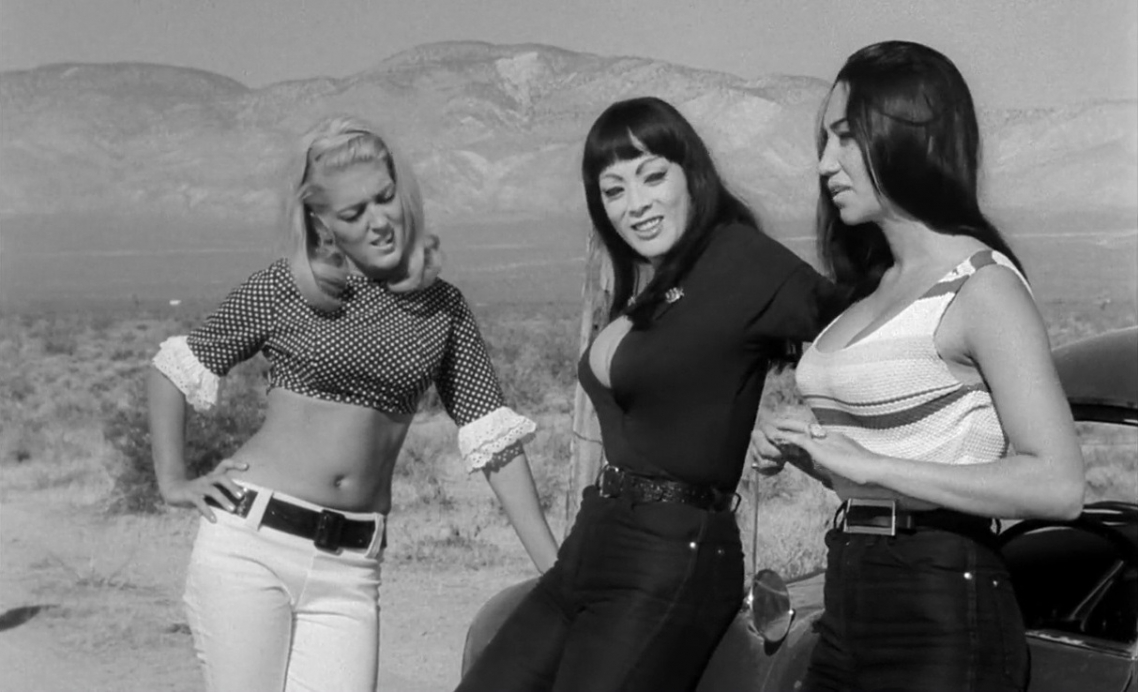
First two rules of the Hays Code, which began to be violated by film directors, very often — both in the same project, were ban for erotic and cruelty. One of the most famous exploitation movies having a sexual theme (sexploitation cinema) was “Faster, Pussycat! Kill! Kill!” from 1965, which was full of erotic allusions but didn’t show any real nudity. The large cinemas very rarely took a risk and agreed to show such provocative movies and that’s where grindhouses came in.
Hollywood didn’t forget to show male sexuality as well with the help of peplum — a genre about Greek and Bible characters usually portrayed by sportsmen. Steve Reeves, who played Hercules in a series of movies about his labors, was one of them. And in 1969 a landmark event in Hollywood history happened — “Hercules in New York” came out and showed to the world a colossal power of talent and charisma of a regular Australian guy called Arnold Schwarzenegger.
The movie that finally defeated the Hays Code was “Night of the Living Dead” directed by George Romero in 1968. The heir of “Invasion of the Body Snatchers” raised sensitive issues of race inequality and US intervention in Vietnam making fun of genre’s clichés in the process. The Code was officially eliminated in this same year.
The time period between 60es and 70es has been marked by triumph of hippie culture among category B movies. The main film of that period became “Easy Rider” by Dennis Hopper mocking up the US working class and exploiting such topics as drugs, hippie and bikers culture.
In 70es exploitation films flourished. Except the rebirth of westerns, perhaps this decade is remembered in the first place by Blaxploitation films with their funk, soul and afro hairstyles. These were movies for black audience directed by black directors with starring black actors. The first movie in this category was “Cotton Comes to Harlem” (1970) but the film that set the tone for the whole genre became “Sweet Sweetback’s Baadasssss Song” (1971) by Melvin Van Peebles. This was a bold, if not badass project and it’s hard to tell what shocked the audience the most — porn scenes or the manifestation of black American revolution.
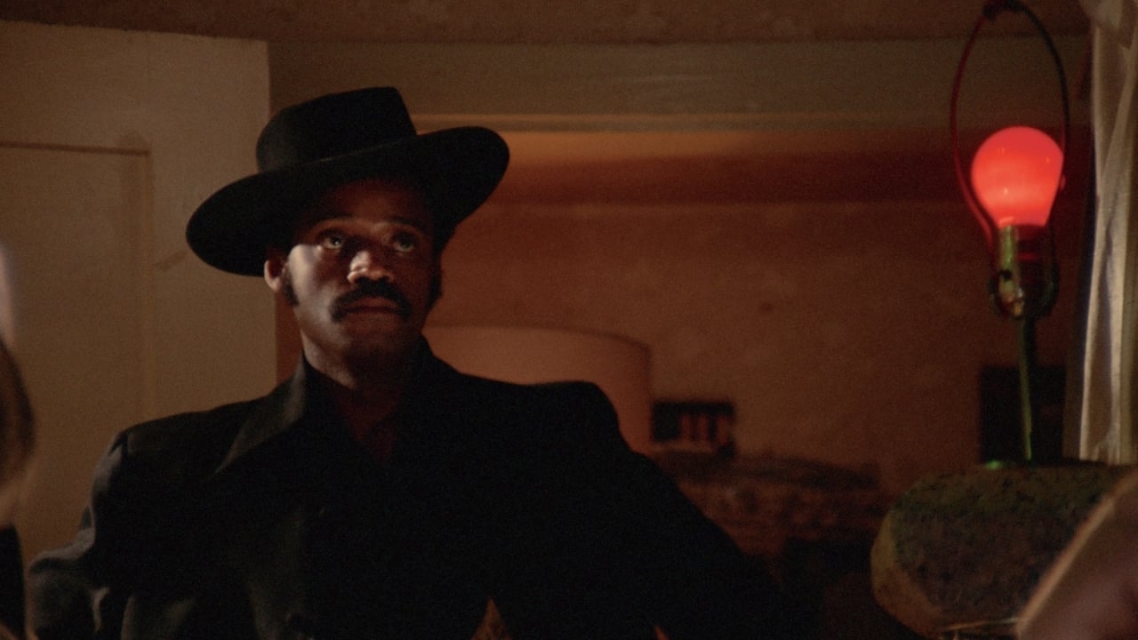
Another genre in category B movies in 70es — movies about martial arts or so called “kung-fu movies” became popular due to some works starring Bruce Lee. They included “Master of the Flying Guillotine” (1976), “The Battle Wizard” (1977) and “Black Samurai” (1976) — a sort of collab of kung-fu and Blaxploitation movies.
At the same time movies like “Pink Flamingos” (1972) were shocking the audience of nighttime matinees with their counterculture concepts. But of course, the start that shone brighter then all of them was “The Rocky Horror Picture Show” (1975) — a category B parody on sci-fi movies, which gave birth to a new subculture based on its plot.
Exploitation movies were some kind of training ground for many directors and have given such iconic movies as “The Texan Chainsaw Massacre” (1974) and “Halloween” (1978) to the world. Thanks to Tobe Hooper and John Carpenter, who did a great job as directors, slasher movies had not only got their significant cannon features but also conquered cinemas for the next decade.
“Mad Max” (1979) directed by George Miller stands out among slashers, kung-fu movies and peplums. It’s a dystopian action film with the main character portrayed by young Mel Gibson. The budget of the movie was so short that local bikers played criminals in it and one of the destroyed cars was belonged to the director himself. Many ideas Miller came up with while shooting the first movie have been implemented only in its sequels — mainly in “The Road Warrior” and “Fury Road”. “Mad Max” broke a Guinness Record by the highest profit/budget ratio and kept that position until 2000 when “Blair Witch” came out.
In 1973 an unknown at that time George Lucas, with financial assistance from Francis Ford Coppola, produced a low-budget B movie called “American Graffiti”. The movie had a roaring success despite the fact the distributors hadn’t any high hopes about it. “American Graffiti” opened the door to the big cinema for George Lucas and he started enthusiastically promote exploitation films among category A movies. Yes, you got it right, “Indiana Jones” and “Star Wars” are both movies of “low” genre even when it was a lot of money spent on their production and films studios weren’t really sure they would succeed. Another exploitation movie with a big budget is “Jaws” directed by young Steven Spielberg.

From one hand these movies helped American cinema reinvent itself and discovered new path for it to go on. But from the other hand it was a serious blow for category B movies, which lost their uniqueness — as a result a lot of small studios went bankrupt. Isn’t it amusing to know that such movies as “Die Hard”, “Home Alone” and “Total Recall” could be counted as B movies too if they came out 20-30 years earlier.
So, in 80es and 90es the genre was paralyzed with a crisis. B movies at that time mostly are cheap fakes based on popular horror and action films.
Golden nuggets are too few among them but they definitely stand out among other B movies. It’s “The Evil Dead” (1981) directed by Sam Raimi in the first place; the movie that became an object for criticism from religious organizations and censorship. Anyway “The Evil Dead” withstood all the attacks and even had got several sequels, comics books and games while Ash Williams became on of the iconic horror movie characters — maybe his boomstick made him so famous.
Sam Raimi was followed by Wes Craven with his “A Nightmare on Elm Street” (1984), which also could be counted as B movie by the standards of that time. After the success of the movie New Line Cinema company left category B niche and started to work with big budget projects.
Another movie that should be mentioned in our article is “Bad Taste” (1987) by Peter Jackson that was produced several years in a row using his scholarship as a main source for the budget. The movie with 26 thousand dollars budget and the shortage of actors (the director himself played several roles in it) entered the Cannes Film Festival and got positive reviews.
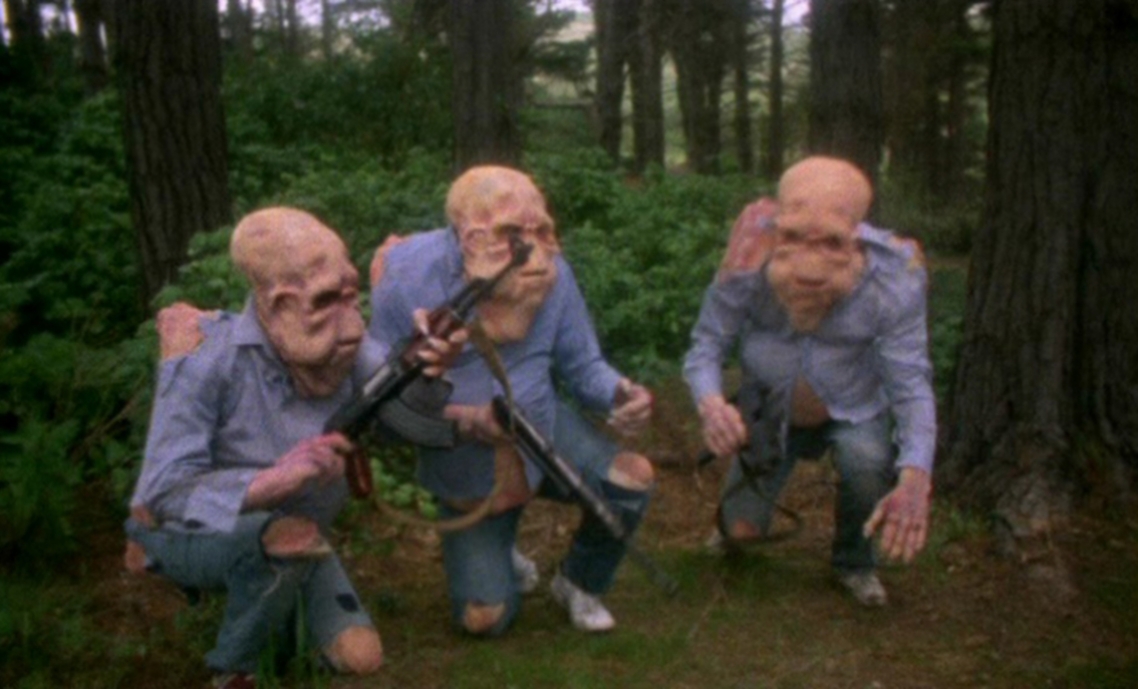
Many low-budget movies produced by independent film studios in 90es were much closer to the independent cinema or even art-house then to category B. “The Pulp Fiction” (1994) is somewhere at the intersection of all three genres. Quentin Tarantino, a big fan of exploitation movies, added a lot of references to the famous low-budget movies to this one (as well as to other his films). Some critics think it’s a kind of theft, as for me, I would say it’s more like cultural references, and Tarantino shows his respect to the famous film directors with it. And well, “Once Upon a Time in Hollywood” is definitely his loudest confession to cinematography.
Another interesting low-budget project was “Clerks” (1994) directed by Kevin Smith. The movie with a budget less than 30 thousand dollars was shown on the Cannes Film Festival and Sundance Film Festival, where it won the first prize. “Clerks” had not just sequels — there was a whole View Askewniverse built around their plot. In the noughties Tommy Wiseau came to the stage and if you didn’t hear a choir of angels singing in your head at the moment I mentioned him, prepare yourself to the life-changing meeting. The man, who gave another “all time worst movie” to the world opened the door to the history of cinematography with both his feet and his deadly serious and incredibly absurd drama “The Room” (2003). Ha ha, what a story, Mark. Unfortunately after “The Room” our maestro has not yet had an opportunity to make films, which would make our hearts bounce but we have not abandoned our hopes.
Except Tommy Wiseau I don’t know many who could stand out and shine that bright in the noughties. Well, Asylum film studio with its mock busters (cheap movies using the same plot as popular blockbusters) was also remarkable in its own way releasing its direct-to-video films faster than big studios managed to show their projects in cinemas. A big advantage for Asylum was reduction in cost of digital technologies, what made them more accessible.
From the other hand it was another trend that had emerged in category B movies branch — iconic low-budged movies changed their “location” and were produced mainly in Europe and Asia instead of US. Among them shocking “The Human Centipede” (2009) by a Dutchman Tom Six and fantastic “Battle Royale” (2000) by a Japanese director Kinji Fukasaku.
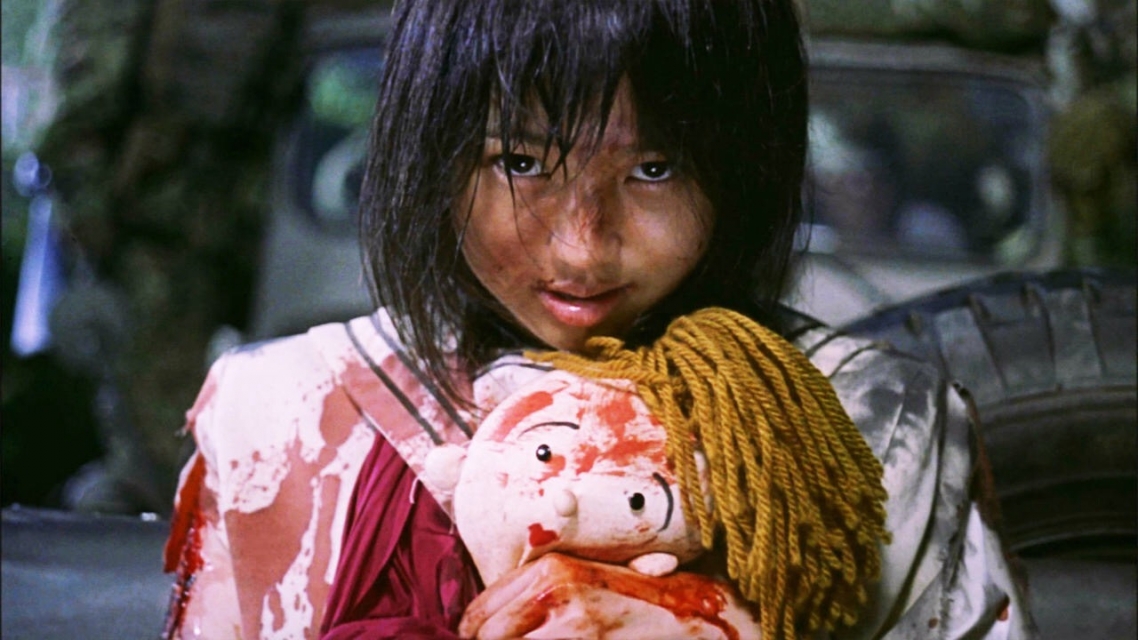
Already in modern times there were several main tendencies in production of low-budget movies. First of all big film studios go back to the basics making not very expensive films like comedies with Adam Sandler and sequels to their own big projects, which were not as good as their first parts like for example “Starship Troopers” sequels (but sometimes it happens accidentally that the quality of the next films leaves much to be desired despite their big budgets. Am I right, Terminator movies? Yes, I’m talking to all of you except the first one).
At the same time famous directors and actors willfully switch to independent and low-budget projects — remember Kevin Smith and his “Tusk” (2014) or Daniel Radcliff, who dazzled the audience with his role in a dramedy “Swiss Army Man” where he is playing a farting corpse.
But it’s not only Asylum, whose classical B movies we are pleased to see: Timo Vuorensola made his “Iron Sky” (2012) naziploitation movie and we shall not forget about famous “Sharktopus” (2010), which inspired many directors to create more shark-themed films like “Avalanche Sharks” (2014), “Ozark Sharks” (2016) and of course “Sharknado” (2013).
With every passing year the Internet gets more and more important not only in the cinema industry but also in our lives. There are not only platforms you can share your projects on (YouTube in the first place) but also new ways for funding (like Gofundme.com). That is how Lina Dunham got a budget for “Tiny furniture” (2010) from a third-party sponsors. Netflix company is taking first time and independent directors under its wing and released a war drama “Beasts of No Nation” (2015), western almanac “The Ballad of Buster Scruggs” (2018) or neo noir “Polar” (2019). The majority of films produced by Netflix get positive reviews by critics.
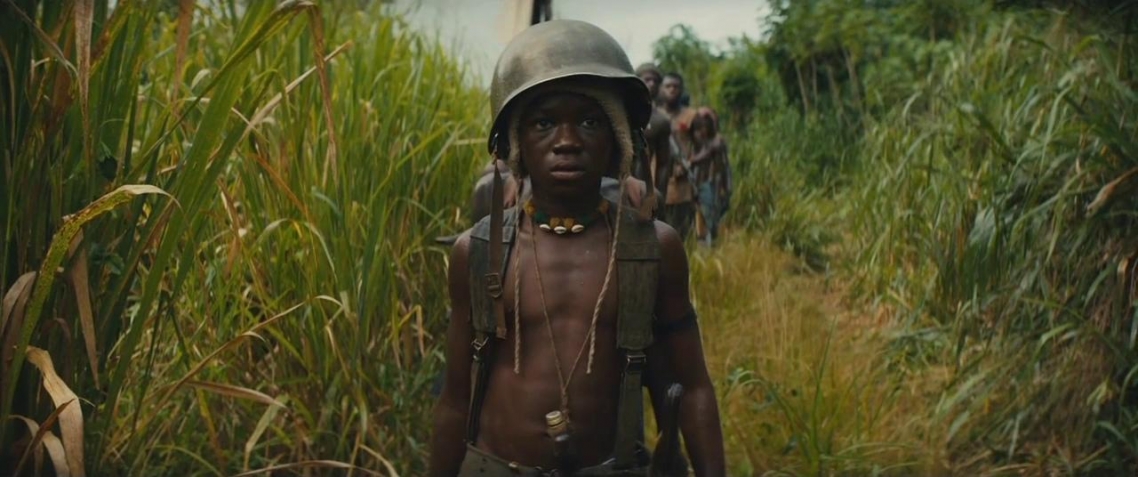
In last decades anime is growing in popularity — now it’s not anymore a hobby for some geeks but one of the mandatory things on the list of all self-respecting movie maniacs (you can be forgiven by not knowing “One Punch Man” but passing by Miyazaki’s works? Don’t even think you will have my “respect” in this case). This trend brought a whole wave of second-rate adaptations of anime and manga comics down on us — for example a dilogy “Death Note” (2006) and “JoJo Bizarre Adventures” (2017). Despite the fact anime fans are not really excited about these screen adaptations (ask for instance fans of “Attack on Titan” what’s wrong with the live-action movie) western companies continue to take their first steps in this genre releasing their own big budget versions of anime movies like “Ghost in the Shell” (2017) and “Alita: Battle Angel” (2019).
-
As you might see, category B movies are not just penny fakes exploiting popular trends. The impact B movies had on cinematography is hard to overestimate — we wouldn’t have “Alien”, “The Matrix”, “Machete” and film adaptations of “The Lord of the Rings” or “Harry Potter”. Many directors and actors, who are recognized masters of their crafts nowadays started their careers with small trash projects. These movies were like a breath of fresh air for “big” Hollywood bounded with strict frameworks and restriction. What is more — now the borderline between low and big budget movies (sometimes you really want to add some of their titles to the second-rate list) is more and more blurred and even a newbie can win a prize at the film festival. Is this tendency good or bad, everyone decides for themselves. What about me, I’d rather go and watch “Bride of the Monster”.
The Best of the Worst: Our Pick From Category B Movies
Plan 9 from Outer Space, 1959
“They're here, they're a fact. And the public oughta know about it!”
IMDb ranking: 4.0
Genres: sci-fi, horror
Certificate: 12+
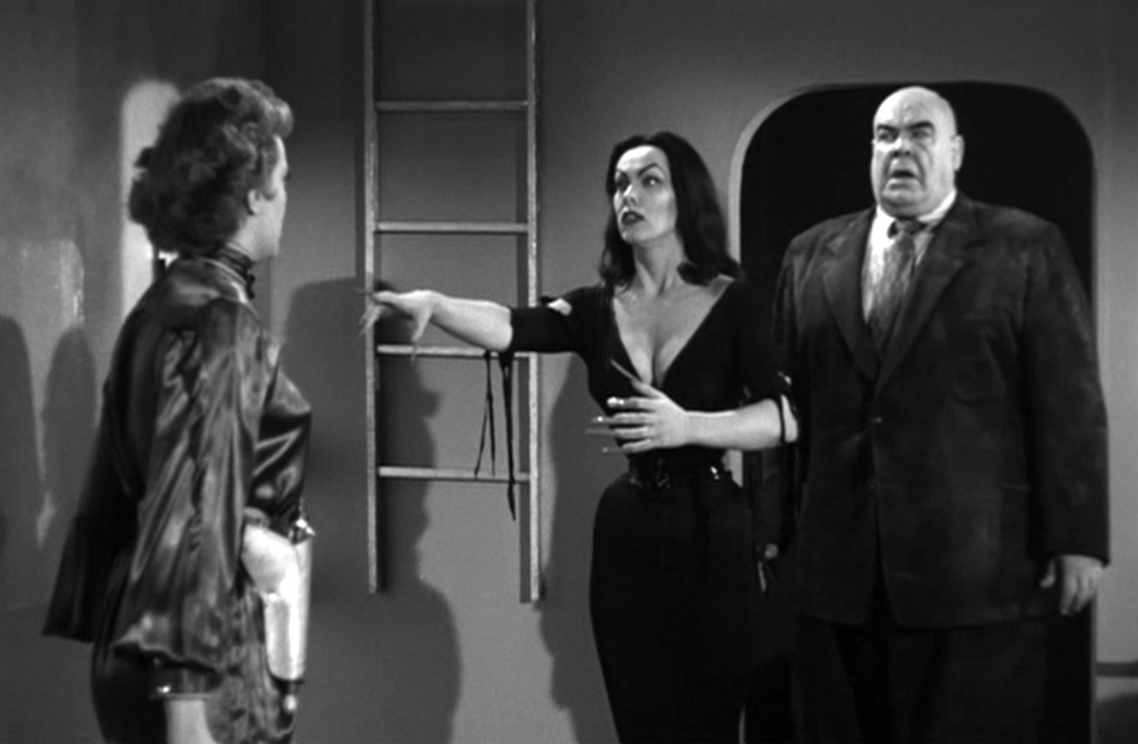
Evil aliens come to Earth and execute their “Plan 9”. They bring the dead back to life and now the humankind is in a great danger. Save yourself, mortals because aliens — the most evil in the whole universe — and living dead will come after you!
It was the last movie of classical Dracula of his time — the great horror master Bela Lugosi. And not only his, Reynolds Pictures studio ceased to exist right after the release of “Plan 9 from Outer Space” too. This was the only movie it produced, what is no wonder though.
Killer Klowns from Outer Space, 1988
“What're ya gonna do with those *pies*, boys?”
IMDb ranking: 6.2
Genres: sci-fi, horror, comedy
Certificate: 12+
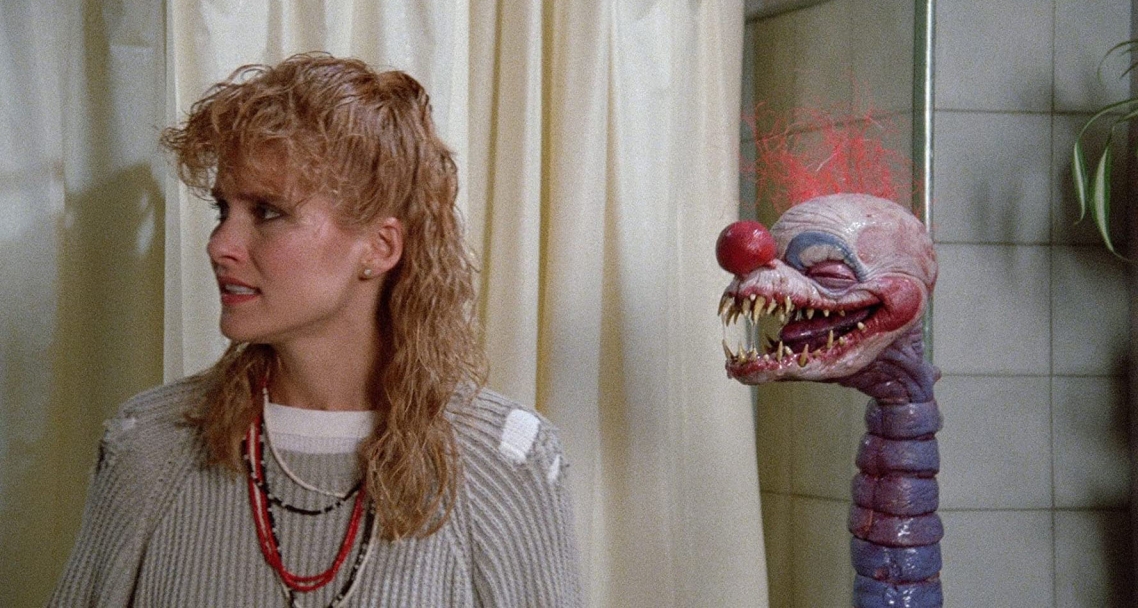
Not enough clowns since “It” movie was released? Do you want more of makeup, red noses and giant boots? Well, you’re really lucky! Special for such a coulrophiles like you Steven Chiodo, the author of such famous short movies as… — okay, you know them yourself! — made his “Killer Klowns from Outer Space”. Alien and Predator, beware! These guys will show you, who rocks in the outer space! The scariest thing is that no one thinks they are a real danger. How can citizens of a small American town (because everyone knows if you want to achieve a big goal — start small) avoid the massacre?
Hercules in New York, 1969
“How dare you touch Hercules!”
IMDb ranking: 3.3
Genres: fantasy, adventure, comedy
Certificate: 12+
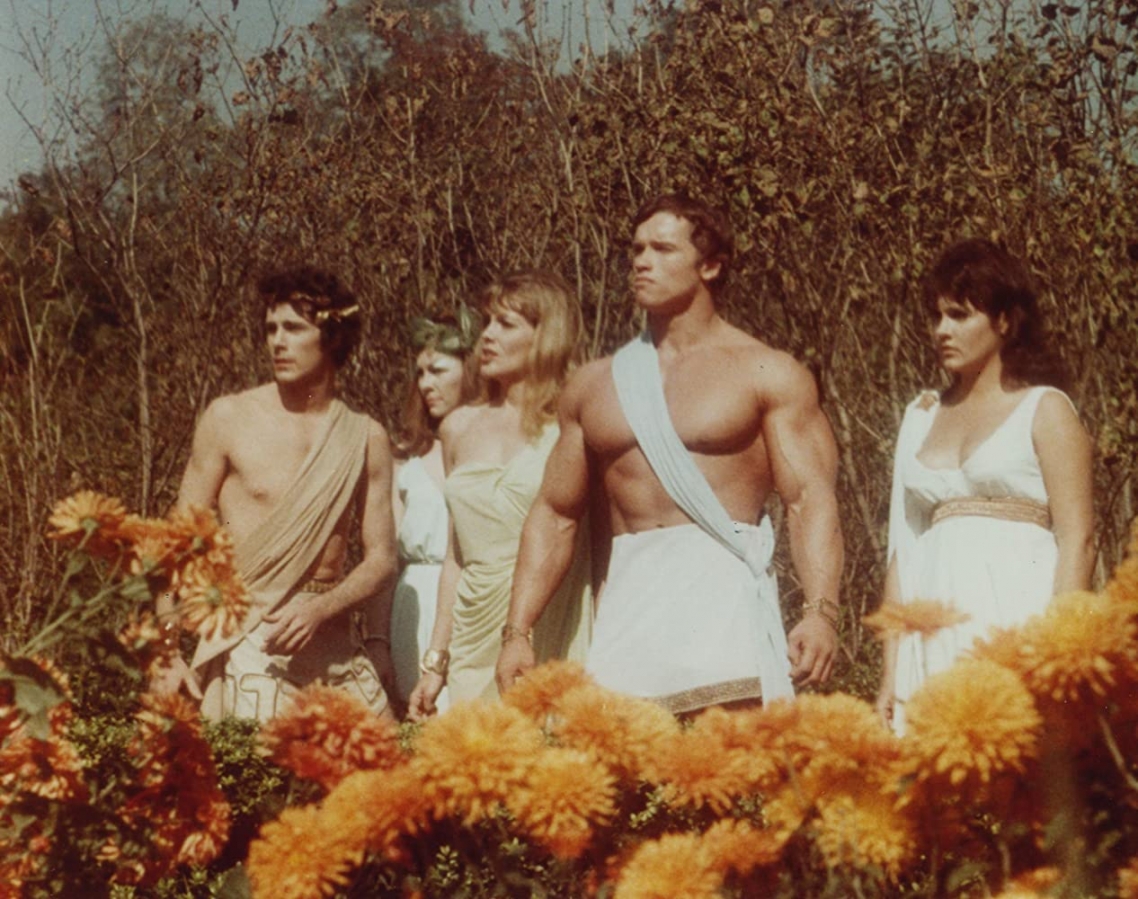
That was long time before “Commando”. That was long time before “Terminator”. It was even before “Conan the Barbarian”. It was Hercules! And he visited New York because he was bored sitting on the Olympus. Honestly, what interesting you can find among immortals and all-powerful while mortals have disco, beautiful women and bodybuilder career. And yes, if you put your lips together like that, your Hercules will look diviner.
Iron Sky, 2012
“All presidents who start a war in their first term get re-elected.”
IMDb ranking: 5.9
Genres: action, adventure, comedy
Certificate: 16+
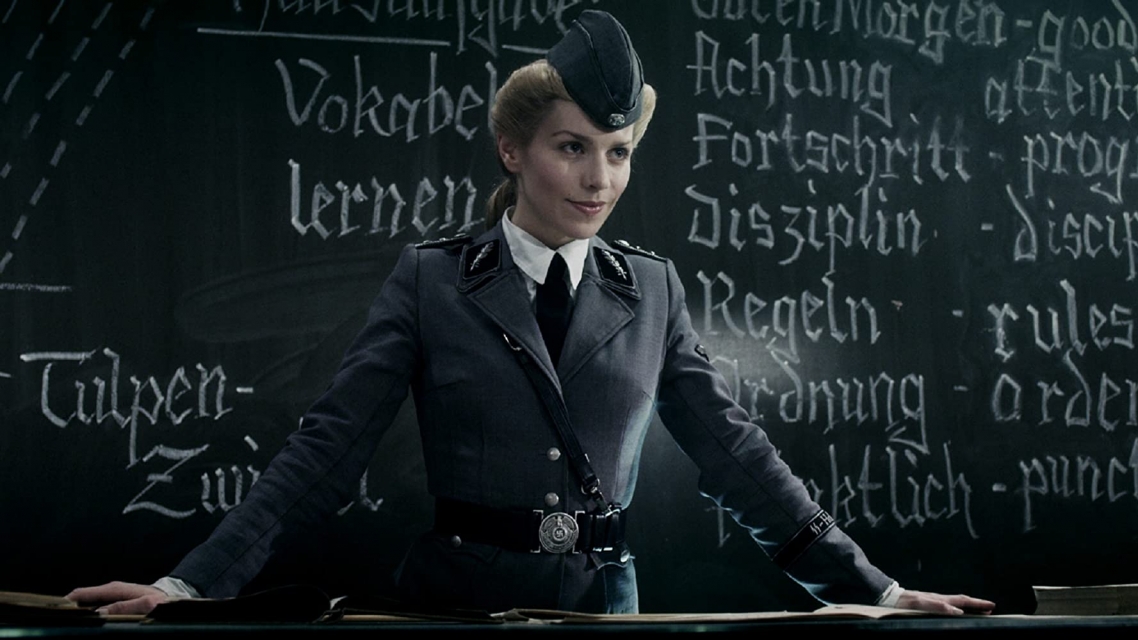
What’s there on the dark side of the Moon? Aliens? Ancient astronauts’ graveyard? Boring craters? Brad Pitt trying to get to a space base? How about undefeated remnants of Nazis, who escaped to the Moon in the end of the war? And this very Nazis are planning to attack the Earth and finally establish their rule there! Who can stop them from that now?
Sharknado, 2013
“There are sharks flooding the streets. And now there is one swimming in your pool.”
IMDb ranking: 3.3
Genres: action, adventure, comedy
Certificate: 16+

In 2012 the world was expecting its end, which should have come according to Aztec’s calendar. The humanity was waiting for alien invasion, nuclear war or some natural disaster. No one could imagine that the real apocalypse will come in the summer 2013 in south California and that it will be a tornado. And against all laws of the nature and logic — a sharknado. It’s hard to tell what scares you the most in this movie: sharks, who destroy everything on their way or computer graphics typical for the infamous Asylum film studio.
The Blob, 1958
“Chew on that, slimeball!”
IMDb ranking: 6.4
Genres: horror, sci-fi
Certificate: 12+
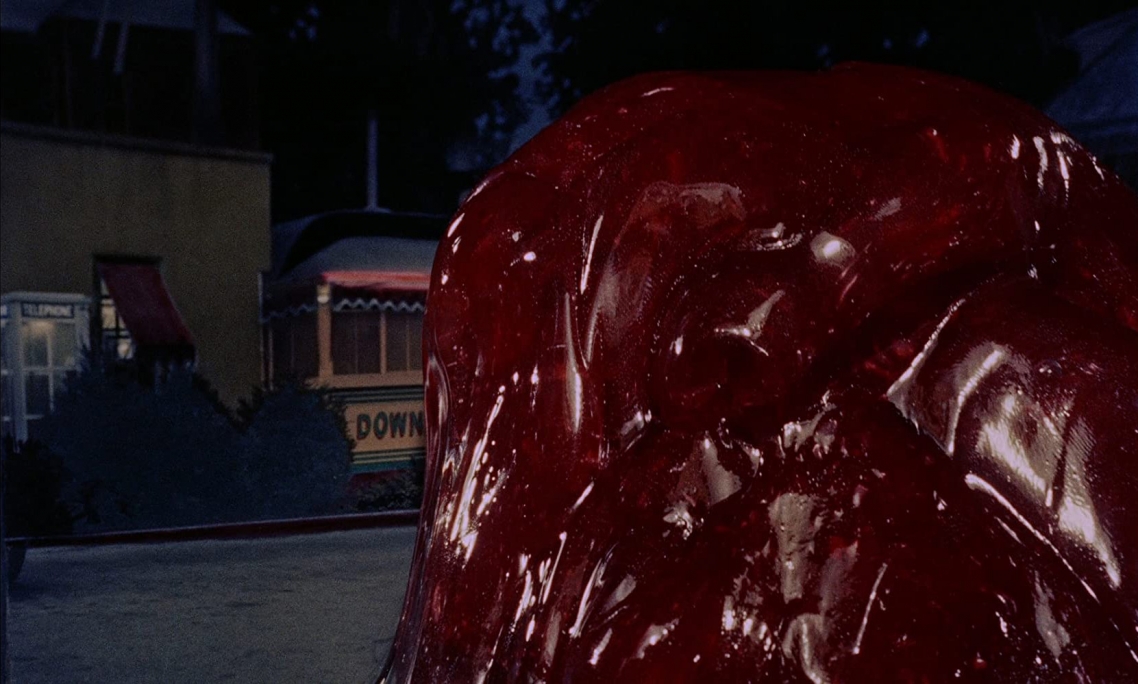
We were afraid of maniacs. We were afraid of zombies. We were afraid of vampires. We were afraid of aliens. Now it’s time for a mankind to prepare before the new danger comes — alien flesh-eating… snot. Well, an amoeba to be more precise. It engulfs everything it can reach to growing in size by that and almost nothing can stop it — neither police nor army. But its main enemy is laying low in our fridges…
Dinosaur Island, 1994
“It's time to kick some monster ass!”
IMDb ranking: 3.8
Genres: adventure, comedy, fantasy
Certificate: 16+
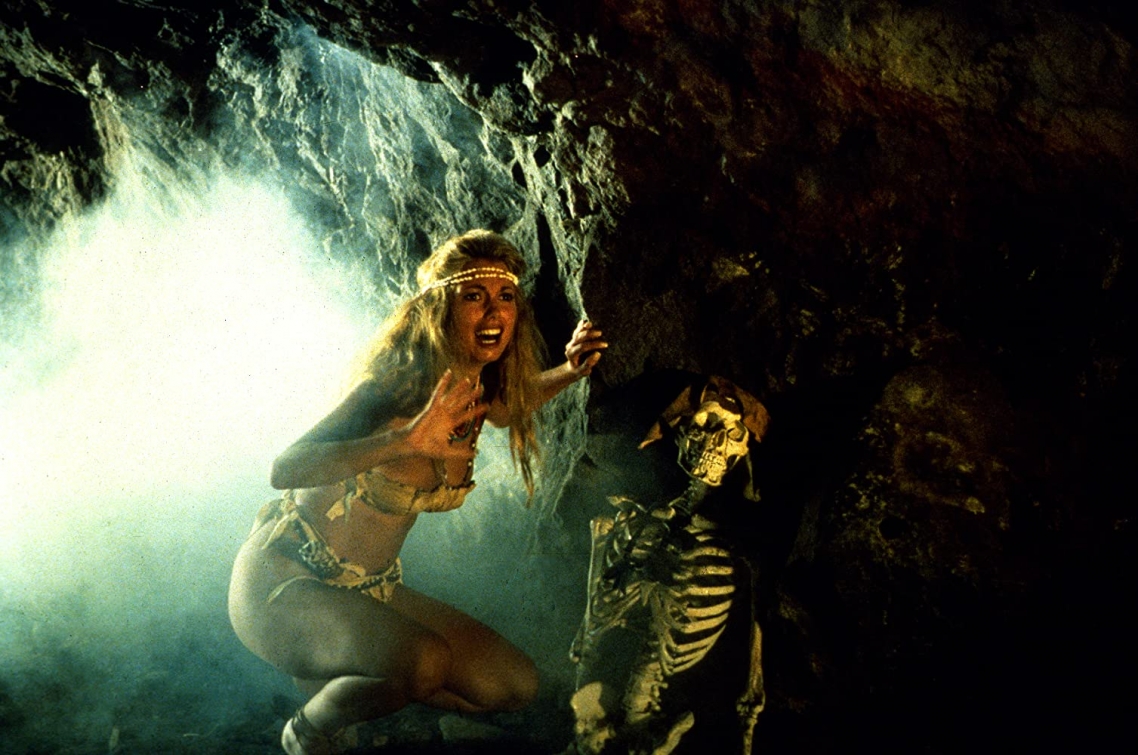
An idea of a new article for our recipes based on the famous movies: mix together “Wonder Woman” and “Jurassic Park”, remove all the cool stuff from these two movies and cover it with half-naked women. Water it down with a loose King Kong parody plot and you will get miraculous in its absurdity “Dinosaur Island”.
It Came from Beneath the Sea, 1955
“The next time I cruise in these waters I'm going to have torpedoes with warheads on them.”
IMDb ranking: 6.0
Genres: sci-fi, horror
Certificate: 12+
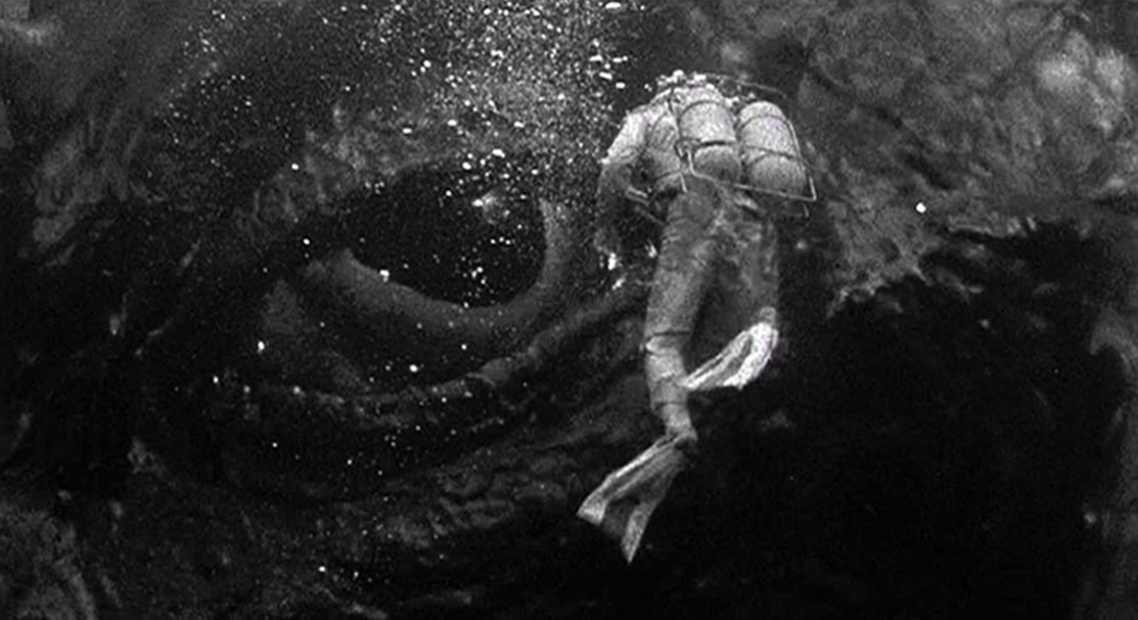
As a result of a nuclear experiment an octopus grows in size until it becomes giant. Deaths of several fishermen are not enough for it, so the octopus is heading to San Francisco. Perhaps it wants to sue those, who made him like that otherwise it’s really not clear what for does it need to crawl ashore.
Military guys have to confront him and seems like this creature does not impress them at all — after giant monkeys, spiders and ants a huge octopus is more or less a routine (or actors are too lazy to actually play).
Foxy Brown, 1974
“The party's over, Oscar. Let's go.”
IMDb ranking: 6.5
Genres: action, thriller, crime
Certificate: 18+
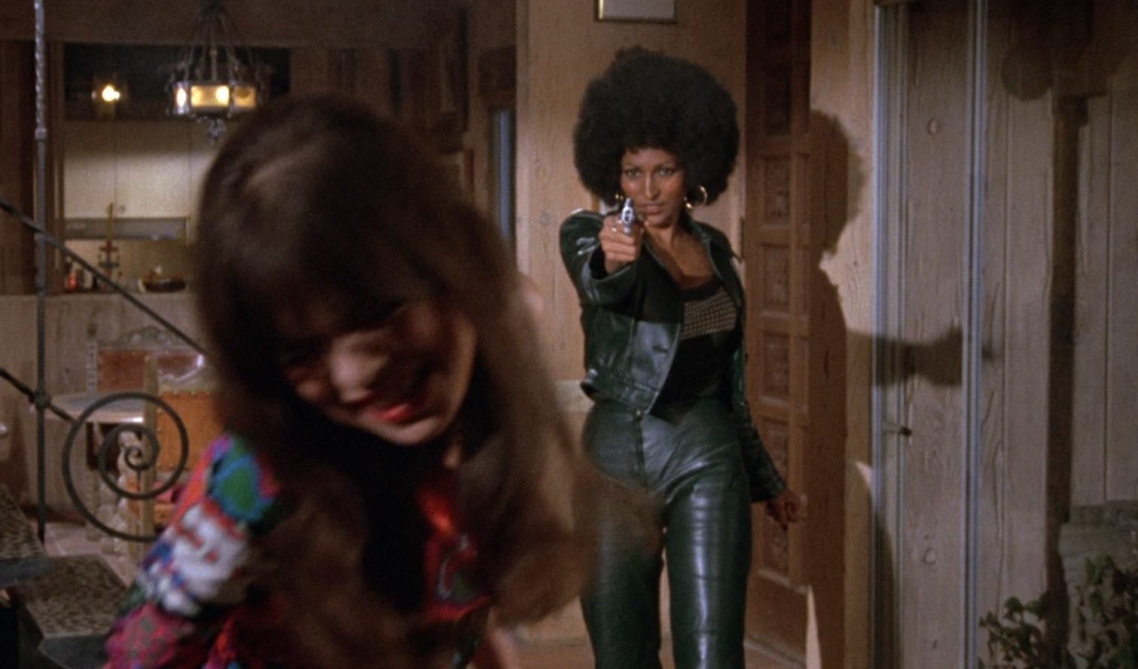
Foxy Brown wants revenge for her lover — an FBI agent named Dalton Ford killed by drug dealers. Foxy is beautiful and deadly dangerous. Drug dealers have to be very careful because she is coming after them. Despite its third place on top Blaxploitation movies list, “Foxy Brown” is still considered to be a controversial film because of the racial stereotypes in it.
The Barbarians, 1987
“— Stay where you are, fatty.
— Fatty? Me?
— You.
— FATTY! Who you calling fatty, moosehead?”
IMDb ranking: 5.0
Genres: action, adventure, fantasy
Certificate: 12+
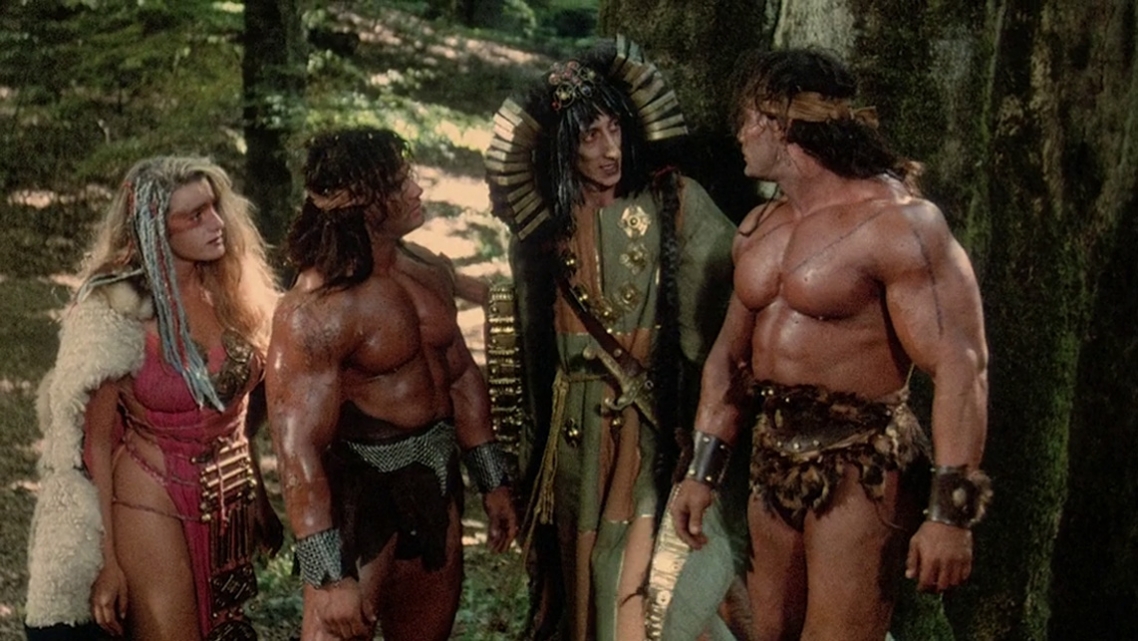
What could be better than Conan the Barbarian? Only two Conans! Do you remember those athletic twin brothers from “Twin Sitters” comedy? Just imagine something like that but without the kids and happening in the ancient times!
At the early days of the world a tyrant from Kadara tribe kidnaps the newborn twins. Despite the hard work and poor ration brothers are growing so strong that every bodybuilder would be green with envy (quick, we need to find out what kind of diet have had slaves of the past!). One day they find out that the queen of their tribe is imprisoned by Kadara tribe too. So brothers set on a rescue mission.
Robot Monster, 1953
“Show yourselves, and I promise you a painless death.”
IMDb ranking: 3.0
Genres: comedy, horror, sci-fi
Certificate: 12+
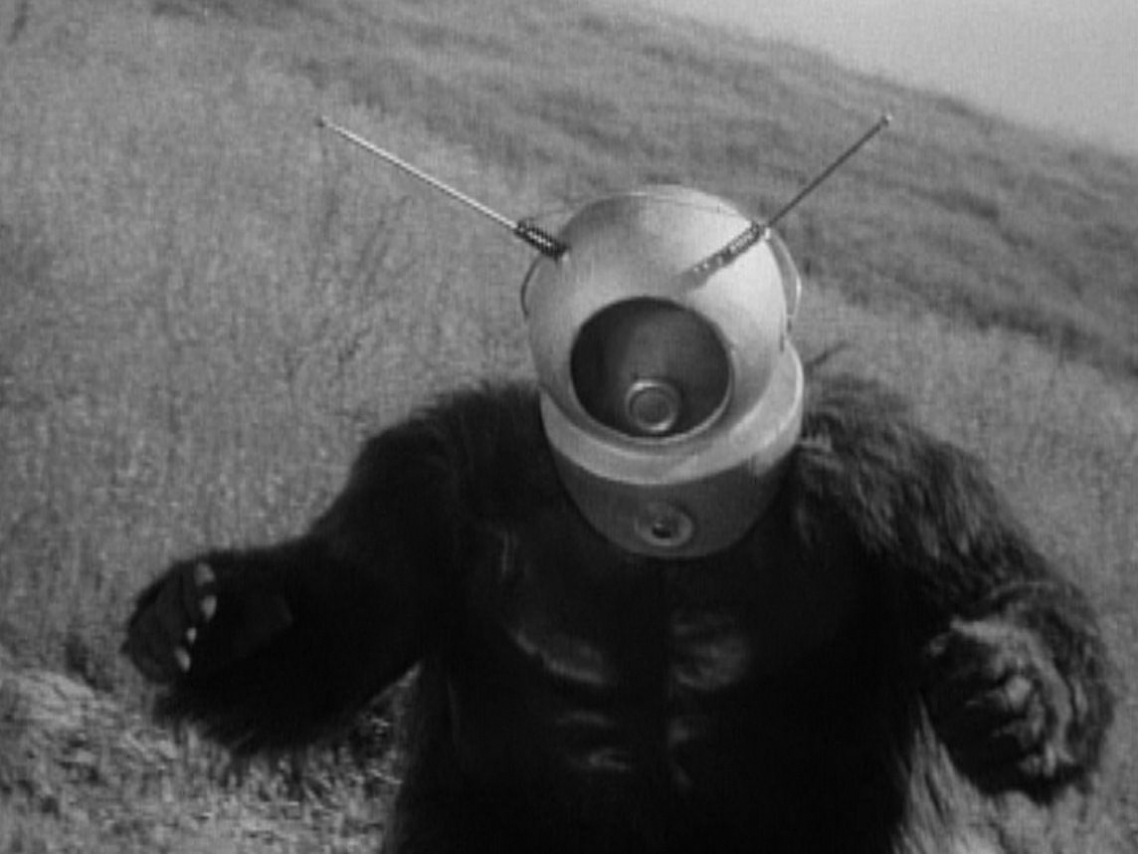
A dreadful monster called Ro-man, who looks very much like a gorilla with a futuristic TV on its head, destroyed all the humankind except eight people. The alien plans to wipe out the rest of the Homo sapiens but one day it starts to feel. How could that help the survivors?
Deadly Prey, 1987
“I like being on the winning side. It's a lot healthier.”
IMDb ranking: 5.3
Genres: action, thriller
Certificate: 16+
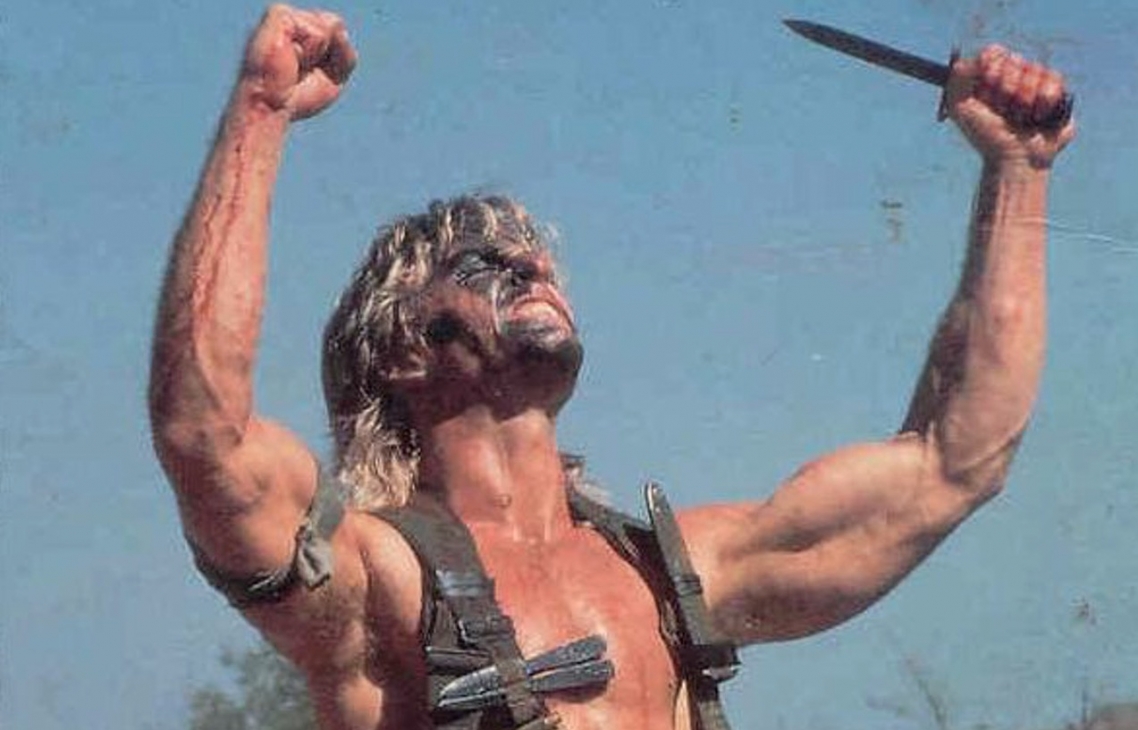
Do you remember you as a child painting your face with a shoe polishing and went playing “war” game after you’ve watched “Rembo”? One team were good guys and another — bad guys and both teams were sitting in the ambush in the closest lashes and fighting each other with sticks, which should have played the roles of “machete”, without having any history plot for the background. And now imagine that the adults did exactly the same but for some reason decided to take a video of it and show in cinemas afterwards.
A former military Hogan kidnaps people on the streets to make them living target for his perfect hitmen’s training. But one day one of the victims turns to be the Vietnam war veteran, who had heat left in his arms.
Mac and Me, 1988
“— Well, what are we gonna do?
— I don't know. Just keep him dancing and they'll just think it's a teddy.”
IMDb ranking: 3.4
Genres: adventure, fantasy
Certificate: 6+
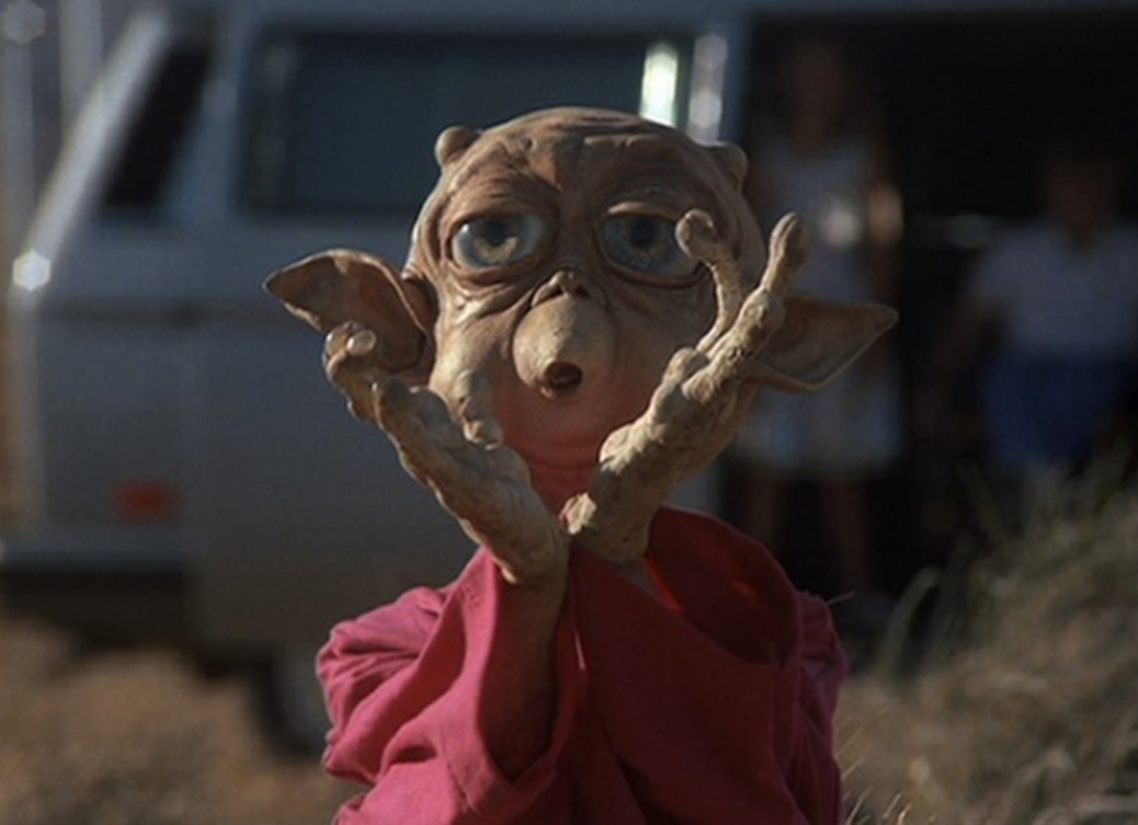
If Steven Spielberg would have no budget, no talent and only wished to make money from clingy product placement (even the name of the main character is a reference to burgers) while he was making his “E.T.” it would be “Mac and Me”.
Mac is an alien child living on a deserted planet. Accidentally he and his family are taken by NASA research rocket and brought to the Earth.
While the family is going to a desert Mac hides from chasing him special agents and runs into a family of a single mother and two her sons.
You know, even when the certificate says it’s 6+ I wouldn’t show that movie to children. Have you seen those creepy bug eyes of the main character, who supposed to be a cutie? Well, I take a look at them right before going to bed. I was scared more than after all the horror movies I’ve watched in my life combined.
Braindead (или Dead Alive), 1992
“They're not dead exactly, they're just... sort of rotting.”
IMDb ranking: 7.5
Genres: comedy, horror
Certificate: 18+
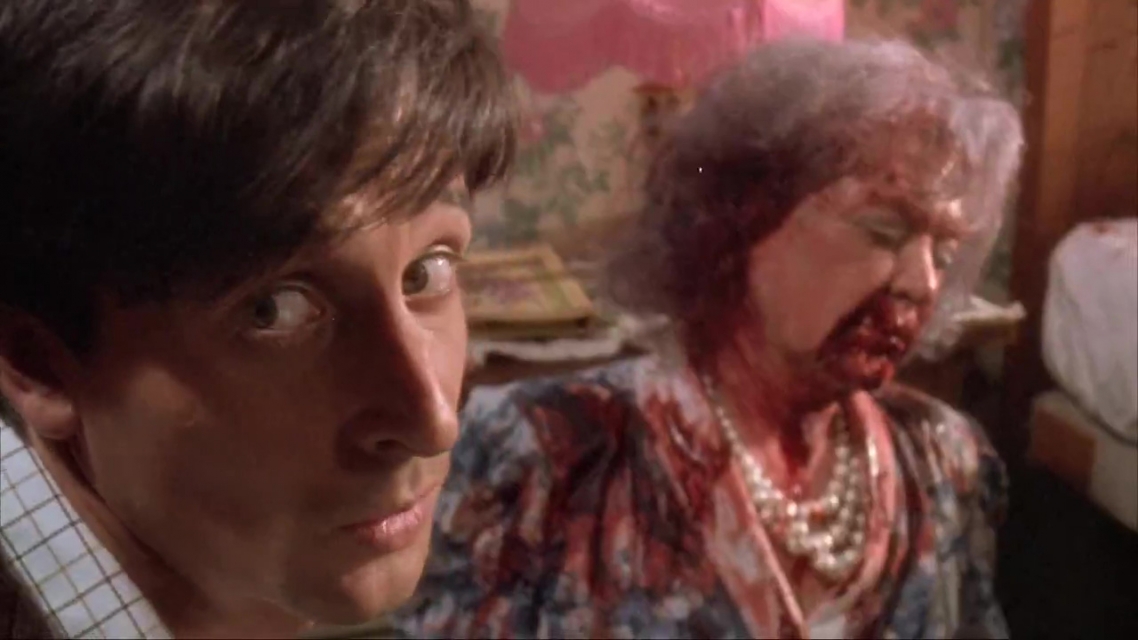
In fact, “Braindead” has the highest ranking among the movies on our list and deservedly so. Because it’s director is Peter Jackson. Yes, that same, who directed “The Lord of the Rings” and “The Hobbit”. And the film itself is a great parody on the zombie horror genre.
A rat-monkey from the Skull Island where King Kong lived once is transported to Wellington’s zoo. The rat-monkey bites the mother of the main character and she begins slowly turning into a zombie…
It’s a great movie if you want to play a drinking game while watching. Take a shot every time zombie kills someone in a new way. But be careful, you can get alcohol intoxication during the scene with a lawn trimmer.
The Room, 2003
“I Did Not Hit Her. I Did Not. Oh, Hi, Mark.”
IMDb ranking: 3.7
Genres: drama
Certificate: 18+
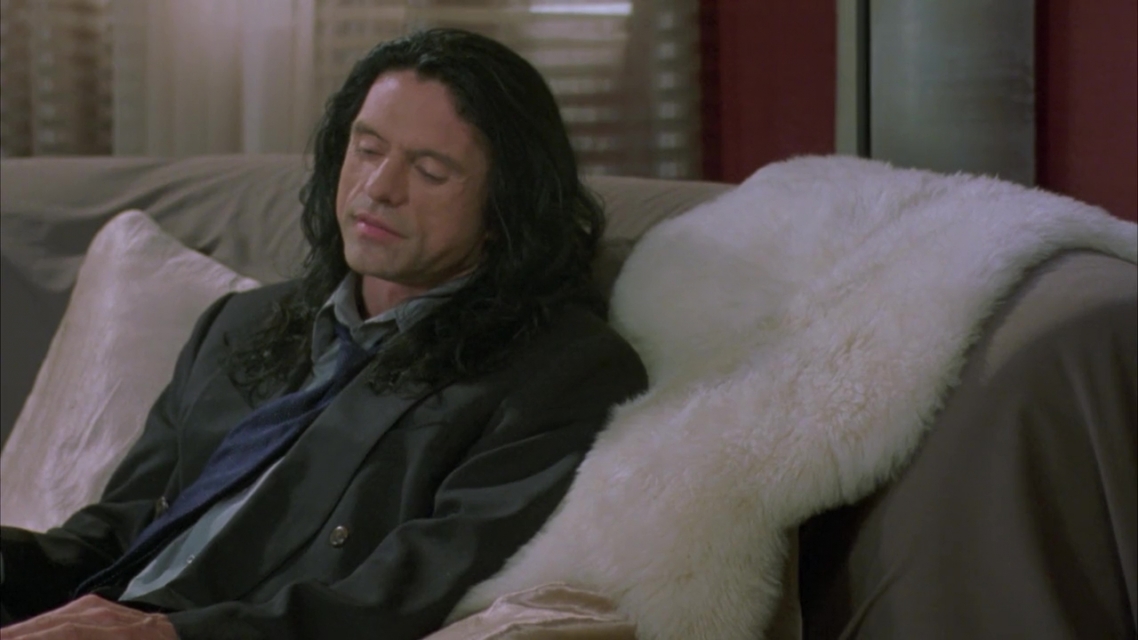
Here it is — a leader among memes, a titan among actors, a god of all the directors, well let us not be so scarce with our praise — a creator of all the stories and a cinematography genius Tommy Wiseau and his “Room”, which got a recording 1800$ box office in the first weeks it came out.
I should admit it was a very difficult choice for me to decide which line from that movie I want to quote — all of them are marvelous and worth mentioning. I even thought to share a link with the best scenes from “The Room” but it would be too easy. You’d better to watch the whole movie and enjoy them all together.
It’s a dramatic story about a love triangle between a banker called Johnny, his fiancée Lisa and his best friend Mark.
“The Room” became so iconic that there is a biographical movie “The Disaster Artist” (2017) telling the story of the production and behind the scenes of “The Room” and based on memoirs by Greg Sestero — an artist, who played Mark.
Category B movie is a genre where you can find golden nuggets. Even when they turned out to be just a fool’s gold, the joy you will get while following their naïve plot, watching funny special effects and observing actors OvErReAcTiNg and underreacting will be real.
